About us: at PhotoManhattan we've been offering
excellent photography instruction, photo rentals and
exhibit space in Manhattan, NYC, since 2003. More..
Product Photography Tutorial
 The look and quality of your photographs online is important, especially in today’s ever expanding e-commerce climate. These product photography tutorials will provide you with commercial photography tips that you can apply right away in your next photo shoot. The look and quality of your photographs online is important, especially in today’s ever expanding e-commerce climate. These product photography tutorials will provide you with commercial photography tips that you can apply right away in your next photo shoot.
Whether you shoot with a DSLR, a point-and-shoot, or an iPhone this Ecommerce product photography guide will give you the tricks you to know how to do product photography successfully and efficiently.
To go beyond the basics of product photography tips, and into a more thorough hands on commercial photography tutorial, please refer to the Product Photography Courses section of our website. Or to learn the how to's on specific topics (i.e. flash, manual exposure, intermediate lighting), please refer to our traditional Photography courses.
Get started with these product photography tips & tricks:
Use a tripod
The first most common reason to use a tripod is to avoid camera shake which occurs mainly in low light conditions. Minimal camera shake may be unnoticed by the naked eye, but the image will appear to lack sharpness. Steadying your camera on a tripod will prevent this unwanted effect from occurring. Tripods will also allow for imaging effects that would not otherwise be possible such as a long depth of field and motion blur. Using a tripod can also aid with your workflow by allowing you to focus on the set up and keep your framing consistent from shot to shot as needed.

There is a wide variety of tripods available for cameras and phones from very sturdy ones to light weight ones (view more information on our tripod tutorial) . As a quick solution for your next photoshoot, you can place your camera on a table or steady object.
Light options
Flash: Start with turning your on-camera's flash off. This because the quality of light of the flash and its frontal direction can cause blinding reflections and it can look unflattering. Furthermore, on-camera flashes often lack the power to fully light the image adequately.
Window light is your best friend! Natural light varies through out the day providing you with all sorts of lighting options and effects such as direct sunlight (harsh light), sunset (orange cast) or cloudy conditions (softer light). Window light can also be diffused with curtains.
 
 
Artificial lights: you can use any type of home lights from table top lights to clamp lights. The key is to have enough power for your shot. Assuming that most home bulbs are about 100 watts, 3 home lamps will suffice for hand held shots. However if you are using a tripod, then you can make do with less units. And if you are looking for yet brighter option, hardware stores carry 'construction' lamps (the yellow one in the images below) that are 5 times more powerful than regular home bulbs, and barn door lamps which you can use to direct the light more precisely. Even fancier, photography stores sell all sorts of lights made specifically for photography such as those with dimmers and other optional accessories like umbrellas and soft boxes.
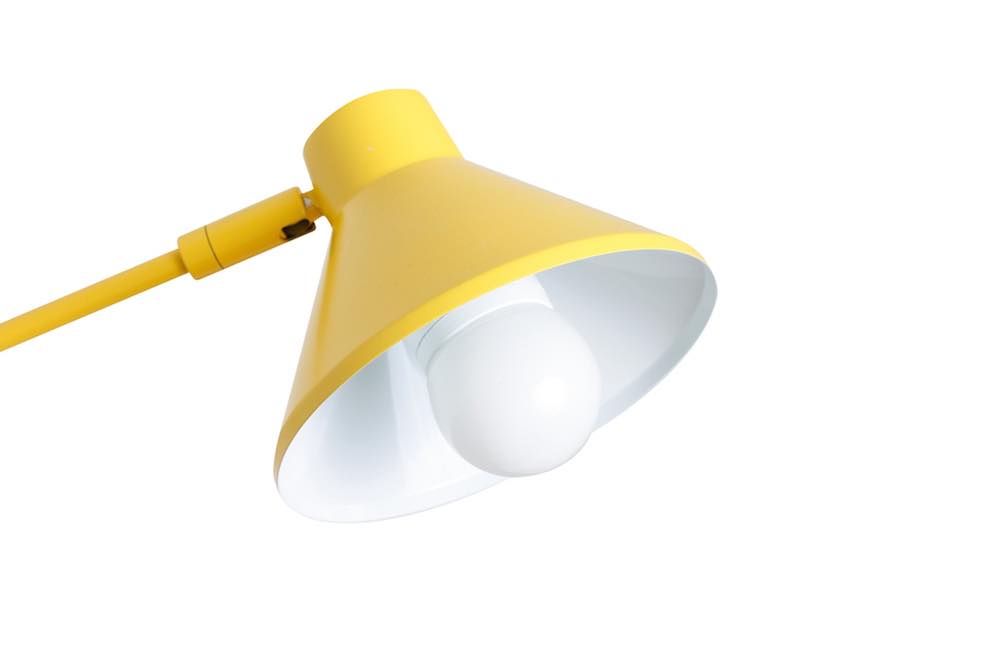 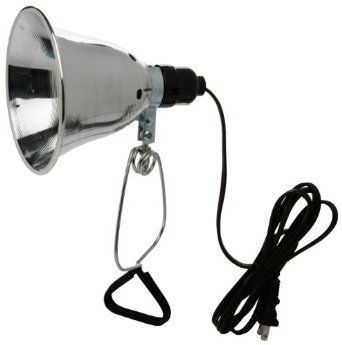  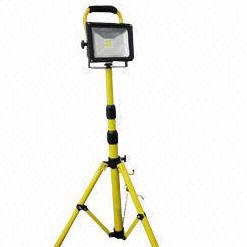 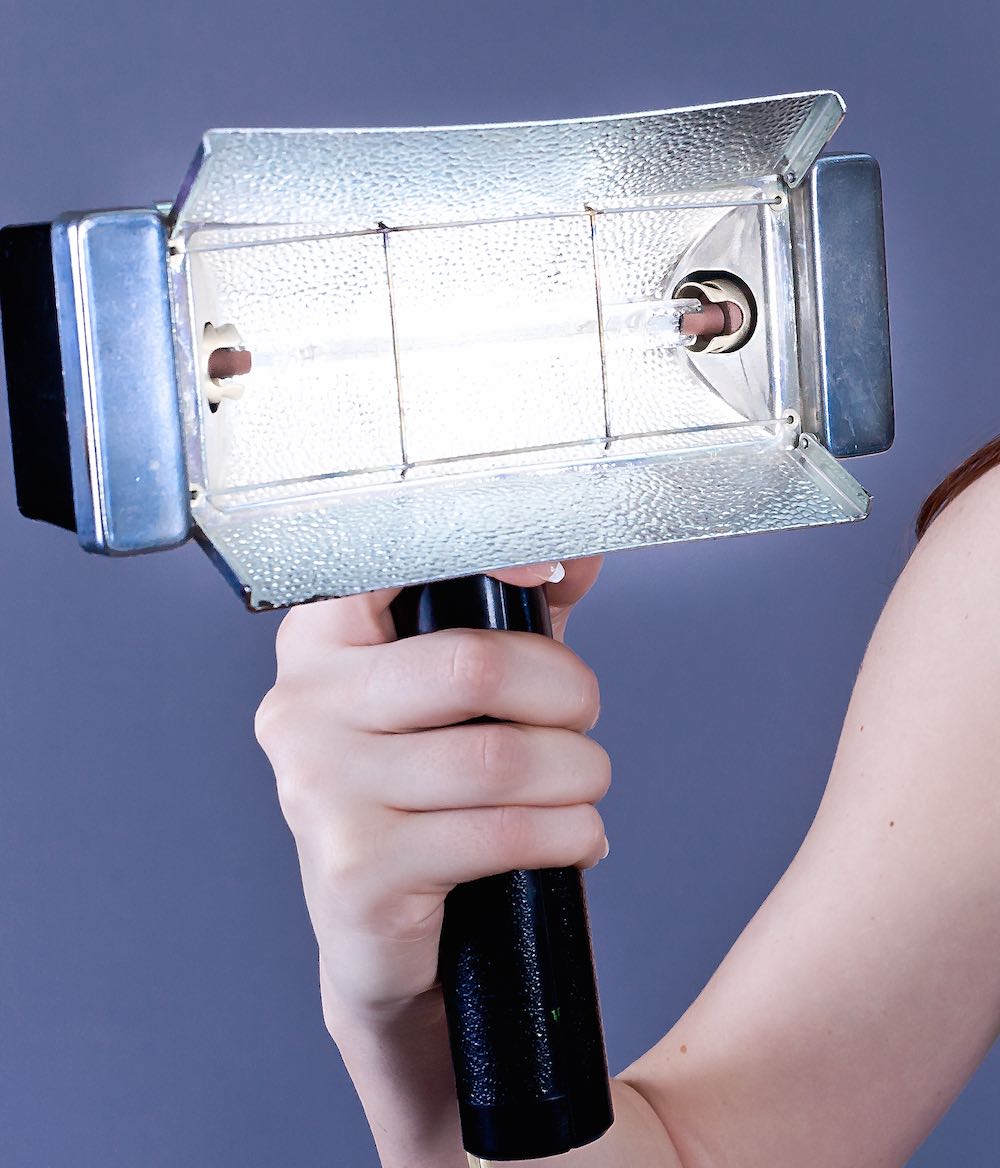
Notes: Strobes and Flashes are the lighting of choice for professional photography as they have more power which equates to more flexibility in lighting effects, can be manipulated by a wide range of accessories, and they produce 'white light' among other advantages.
Lighting setup - Direction of light
To cancel out harsh reflections, place the light/s on the side to the product at 45 to 90 degree angle. Note that angled light is also used to bring out texture.
Key light and fill light: for evenly lit results, use two lights one on either side of your product. If you only have 1 light, use a bouncer to fill the opposite side. Bouncers are readily available at photo stores, but you can also make your own using any white (or metallic) surface. Walls, cardboard, or white paper all work well. For yet a more evenly lit image, or for back light effects, you can use a 3rd light above the product.
  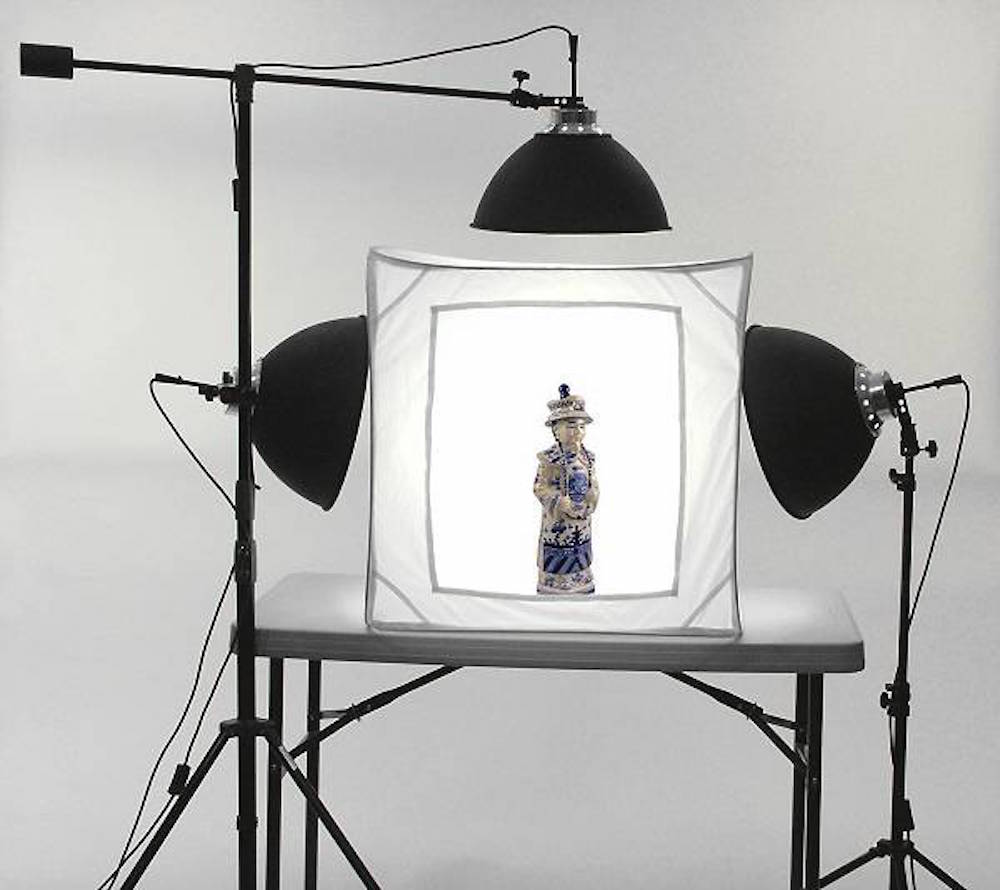
Soft light - Quality of light
Unless you are shooting a high contrast image on purpose, soft light is generally the lighting of choice for most situations. This type of lighting creates softer shadows and average tonal values. There are plenty of accessories to produce soft light such as umbrellas, soft-boxes, bouncers and reflectors. A home made solution can be any white surface to bounce the light off of, including walls and cardboard. Or you can use a translucent material, such as tracing paper, as a diffuser.
When working with natural light, an overcast sky or light from under the shade (non-direct sun light) can be considered soft light. You can further soften it by using translucent curtains, or other materials.
  
The light tent: if you are shooting small products, the light tent is a good solution to achieve the most evenly lit, soft light. Light tents are available for purchase online and at photo stores. You can build your own light tent using card boxes. (View how to make your own)
Tint and Color temperature
White balance: While most camera's auto white balance will adjust correctly to the color of daylight, under artificial light some cameras might fail to auto detect the right color temperature. If your images look like they consistently have a yellowish tint, adjust the white balance manually by using either of the options that your camera offers: some of which may be bracketing, the dedicated 'artificial light' setting (instead of auto), or manually dialing the correct color temperature. (It should be about 1200 - 3400 for home lights).
Color cast: Be aware that light will bounce around the room and reflect back into your product. If there are colored walls, ceilings, or any colored object close by, unless that reflection is blocked, the colored object will produce a color cast in your final image. A light tent is a good solution to prevent this.
Background setup
Plain black or white backdrops are popular because they make the product stand out. You can easily create a backdrop using fabric or rolls of white or black paper found at stationary stores. To avoid a sharp fold showing behind your product, create a curve ('infinity curve') by placing white paper and bending it upwards like in the image below. This will result in a clean, background-free off lines.
To create a more defined look, blur out the background: 1) set the settings in your camera to create the shortest depth of field (this could be the preset for Portraiture but it depends on your camera model) and/or 2) Place the product as far away as possible from the background.
 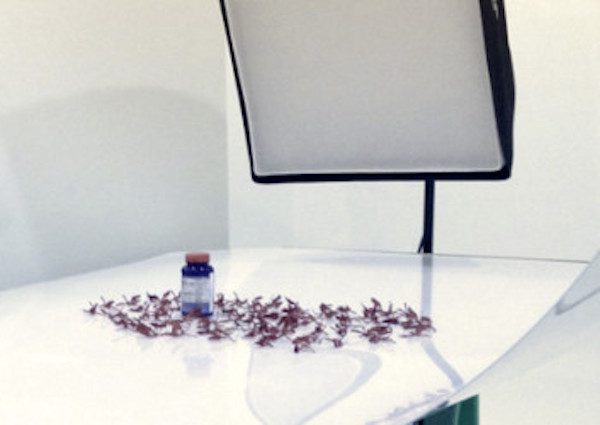  
Another popular background tool is using a plexiglass (white, black or clear). This provides the reflections seen on the image below. This options also allows you to project the light from behind the plexiglass towards the product so to create additional lighting effects.
Online stores: if you plan on showcasing your products in sites other than your own, note that online stores have their own guidelines for background colors and props. For example, while Etsy doesn't have many restrictions at all in terms of background, Ebay requires a plain (free of props) backdrop of any color, and Amazon requires 100% pure white. Be sure to also consult the guidelines of the online store where you are publishing your products.
White background: While a 100% white backdrop can be achieved through well manipulated lighting (and ratios), a popular technique to expedite this process is to shoot against a green or blue background. This will allow to easily cut out the background in post processing to all images at once with quick automated actions.
Framing, Staging, Styling - Visualize
Framing and details: often times the photo looks good while you are shooting it, but not so good when you transfer it to the computer due to either the composition being off, or there being simply a scratch or dirt / dust in your product. Once you are done setting the lights take a few seconds to visualize the frame as it would look on the final image. Move the products around until you get the composition that looks best to you. Then, spend a few minutes styling the shot by cleaning up the products and checking the background. You'll be amazed at how the process of visualization and styling will expedite your overall workflow and spare you the seemingly endless amounts of time spent on reshooting.
  
Sharpness vs Blur: Blurring out the background is a good technique to place emphasis only on the product or parts of the product that you'd like to emphasize. To get this effect, you need to set your camera to a wide aperture or F-Stop and do a few tests with different apertures to determine what level of blur works best for you. If you shoot in automatic and cannot alter the camera settings significantly to achieve the blur that you are looking for, or, if you are already shooting in manual but the level of blur is not enough, you can use these tricks to increase blur:
- use the zoom instead of a wide angle.
- bring the product as far from the background as possible.
- Reduce the power of the lights. If the lights don't have a dimmer, reduce their power by either pulling them further away from the product, add more diffusion to them, or bounce them into a surface instead of pointing them directly towards the product or light tent.
Background and props: Backgrounds don't have to be white or black; if your online platform allows for it, you can use real life backgrounds and props to emphasize your brand and the 'mood' or message that you would like your product convey.
In your composition, be mindful of the props to ensure that it is clear which product it is that you are showcasing. You can emphasize the main item through: lighting (the brightest one), its proximity to the camera (the closest one) and its sharpness (vs blurriness). In the images below, you can see an example as how the coffee beans in the image in the middle, are emphasized over the coffee cup because the sharp focus is on the beans. The same principle applies for the brightest and closest products.
  
Editing and Post processing
High resolution: Most online platforms will have a suggested or limit minimum image sizes and maximum file sizes, with a popular recommended image size of 800-1000 pixels wide. You are best off shooting at high picture size (or "big") so that you can use as needed in the future. If you have your own website, one consideration is making file sizes into an appropriate size to not slow down loading each page.
Editing: at the very minimum you'll need to resize, rename and file your photos. You'll also want to apply basic brightness and color correction, sharpening, cropping and rotation. For this there are several software options like Photoshop and Lightroom which are paid but offer some free versions or free trials, to Gimp and Picasa which are free and crossplatfrom, through iPhoto and any software provided with your camera. Most of these programs have intuitive editing tools that you can experiment with.
Automatization and batch processing: whether you are shooting one product at a time or thousands of products editing can be a daunting task. You might find yourself spending hours in post processing and even reshooting products. It's a good idea to starting automatizing the work flow as early as possible. Most softwares will have batch processing options built in or as separate add ons. Batch processing will allow you to rename, resize, compress, and rotate and file all your photos at once in a single click. Some software, such as photoshop, also allows for auto cropping, straightening, auto contrast and color and plenty of other options.
Shoot with editing in mind: when automatizing your post processing workflow, you'll have to apply the same edits to all of the photos. So your best course of action is to shoot your photos in a way that lighting and framing are consistent and will be suitable for one-fits-all type of edits. These are some points of considerations during shooting:
- Lighting: in scenarios where the software auto brightness contrast or color does not work well, you will want to keep lighting consistent among all images.
- Framing: if you apply auto cropping or straightening, make sure that lighting is not too harsh and that your products are not too far to the edge
- Rotation: if you are rotating on your batch, always tilt the camera to one direction either left or right for all your shots.
Take your Product Photography tips Beyond the Basics
If you have a space online to showcase your products with more freedom, it's fun to get creative with your shots and to get past the 'individual' shots as seen above. Some shots to consider are: detail or texture, group, accessories, wide shot, scale shot, teaser shot. Try emphasizing other aspects or qualities of the product. For the example below (assuming that the main product are the coffee beans), the following aspects or qualities are also showcased:
- Appliances: American coffee, expresso, french press
- Variety of the product: Beans, ground
- Accessories: coffee grinder, cups, etc
- Quality: fresh, inexpensive, accessible (local store)
- Branding: rustic, young, fun, etc. (who's your audience?)


 

 
We offer various Solutions for your Product Photography
1- Remote assistance:
Schedule a 30min remote session with one of our pros to assist you in how to shoot product photography live.
New! Request date, time, topic.
2- Live Webinars:
Take a 4-5 hour interactive product photography tutorial via a Webinar and have your questions answered live.
Find upcoming webinars.
3- Private Tutoring:
Book a tutor to your location within Manhattan, NYC. Schedule any time within 48 hours, customize topics to your specific needs, whether you are looking for a full Product photography tutorial, just troubleshooting, or getting tips for shooting products for your website.
View availability.
4- Crash courses:
Take a one time crash course at our studio and learn how to do product photography with hands on practice & equipment management.
Find upcoming workshops.
We provide certificates of completion, and a curriculum for you to keep with any of the course options including webinars.
Upcoming Product Photography Webinars & Courses
|